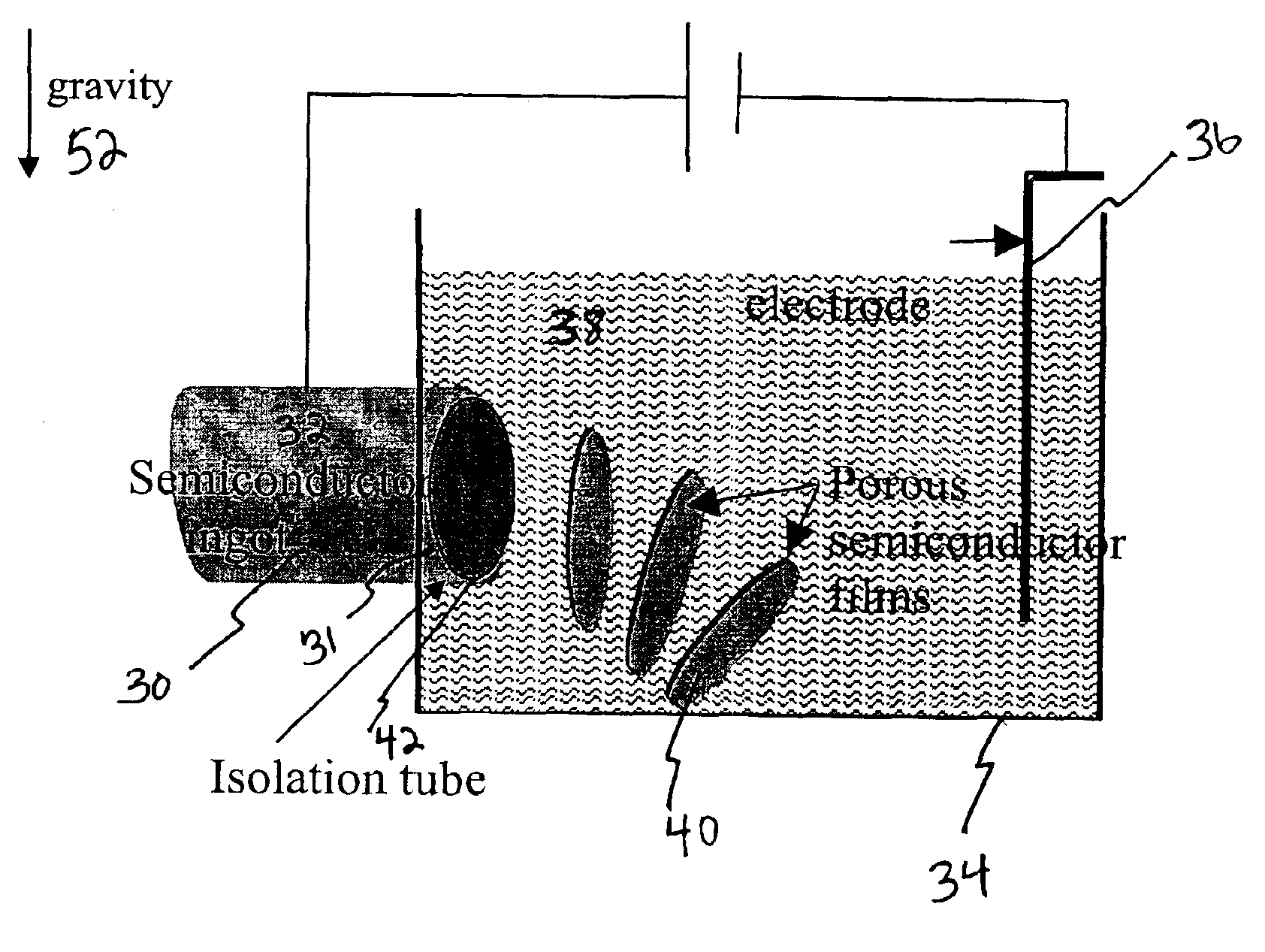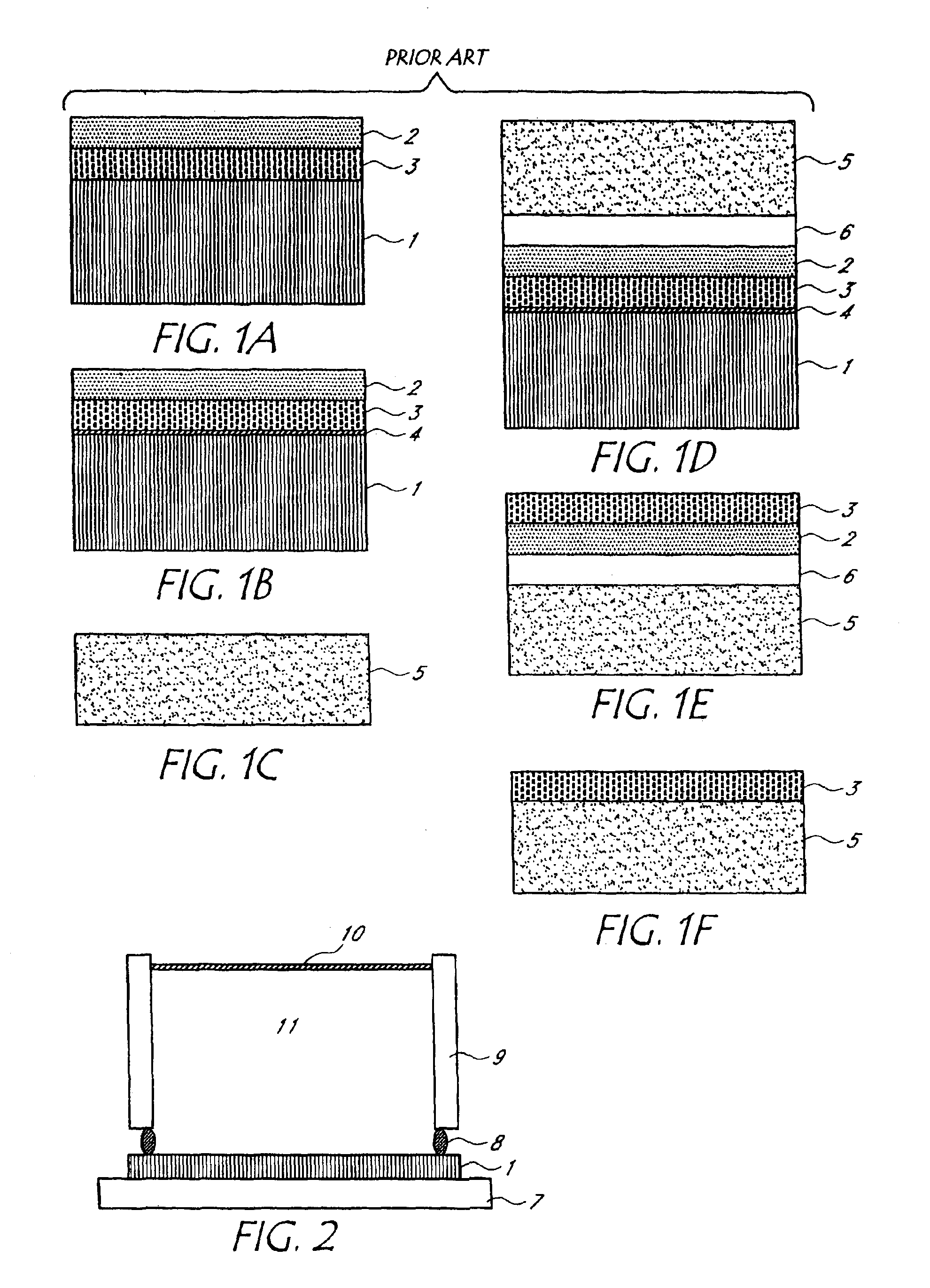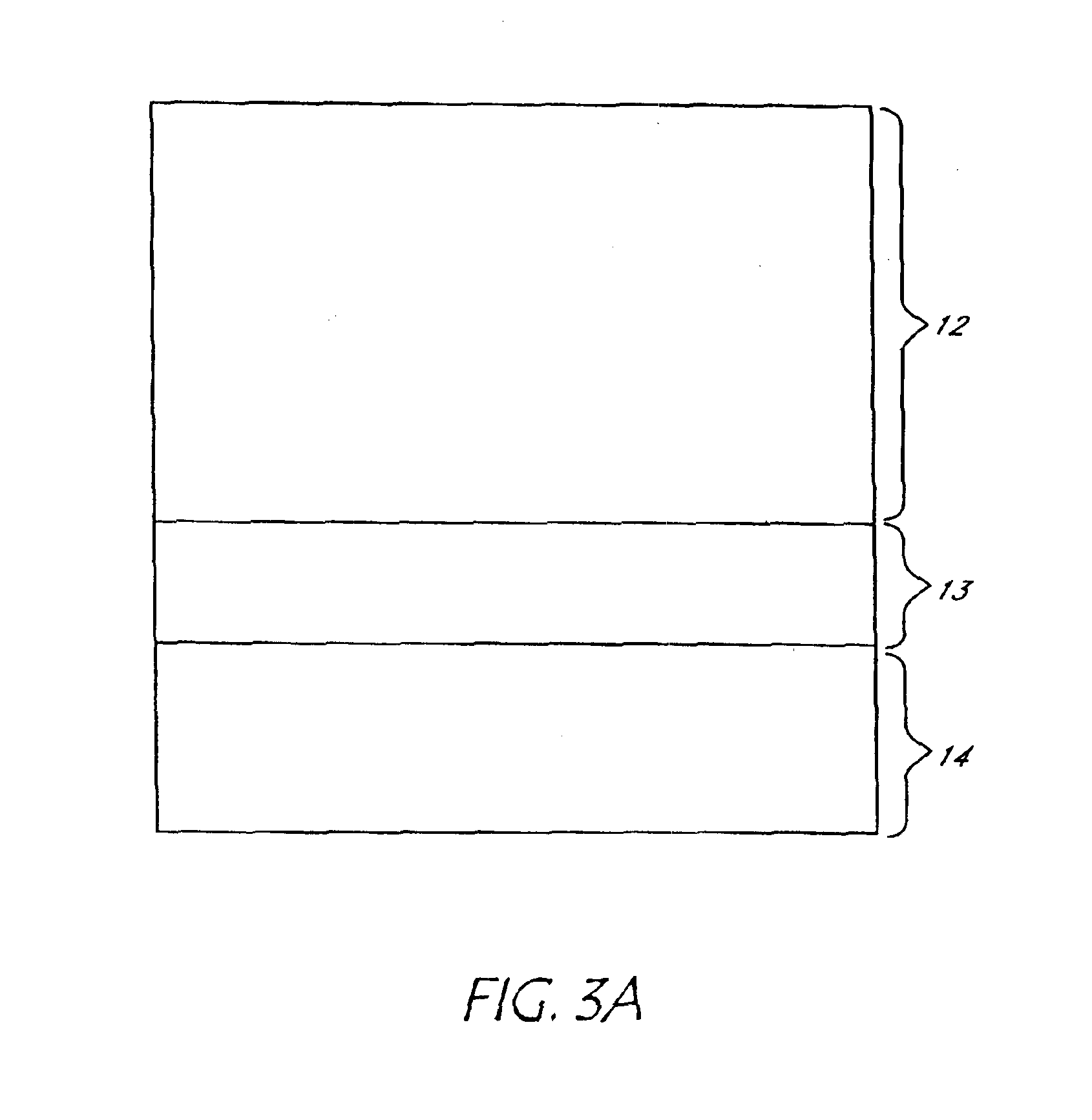Method and apparatus for continuous formation and lift-off of porous silicon layers
a technology of porous silicon and lift-off, applied in the field of microelectronics, can solve the problems of high cost of silicon wafer, loss of kerf, and high mechanical strength of separation layer, and achieve the effect of reducing the loss of kerf, and reducing the mechanical strength of separation layer
- Summary
- Abstract
- Description
- Claims
- Application Information
AI Technical Summary
Problems solved by technology
Method used
Image
Examples
example 1
Experimental Setup
[0037]FIG. 2 illustrates the experimental set-up used for the porous silicon layer formation. Reference numeral 11 is the hydrofluoric acid solution. In the porous silicon formation the platinum electrode 10, which is resistant against hydrofluoric acid, acts as a negative electrode. The bottom plate 7 (e.g. stainless steel plate), which is in contact with the silicon wafer 1 (polished side up), acts as cathode. The rubber ring 8 prevents the outflow of the solution from the contact area of the Teflon® beaker 9 and wafer substrate 1. The rubber ring 8 is kept under pressure by the beaker 9, which in turn is pressurised by a stainless steel threaded ring (not shown).
example 2
[0038]Experiments were carried out with a mixture of HF, acetic acid and deionised water in which the concentration of HF varies between the different experiments from 10% to 40% and current density varies from 25 mA / cm2 to 200 mA / cm2. The acetic acid is used as a wetting agent, and provides enough functionality to obtain a good pore distribution. Ethanol could also be used, but for environmental reasons acetic acid is preferred. For a given current density and for a given HF concentration, formation of the separation layer or a very high porosity layer or a detached layer as shown in FIG. 3A is obtained when the reaction is continued after a certain time. The low porosity layer 12, high porosity (separation) layer 13 just before lift-off and silicon wafer substrate 14 are visible on FIG. 3A. For a 25% HF solution and for 150 mA / cm2 current density this time is around 45-55 second and the thickness of the thin layer obtained is around 7 to 10 microns. Different layer thickness can b...
example 3
[0039]Electrochemical etching of silicon occurs at the HF solution / silicon interface when subjected to the flow of current. When a hole coming from the bulk silicon reaches to the interface, the Si—H bonds is replaced by Si—F bond due to an attack by a fluoride ion from the HF solution. The polarization induced by these Si—F bond lowers the electron density of the Si—Si bond and these are broken too. Silicon dissolves as tetravalent silicon fluoride (SiF4), which reacts with HF and produces fluorosilicic acid (H2SiF6). This electrochemical reaction is limited to the holes and results in pore formation. FIG. 4 illustrates the interface between bulk silicon and the HF solution where pore formation occurs. The numeral 15 indicates bulk silicon, 16 is the HF solution, 17 designates the holes, 18 are the fluoride ions and 19 is the interface.
[0040]Once the pore formation starts at a certain position, it goes straight down in silicon as shown in FIG. 5. The numeral 21 indicates bulk silic...
PUM
| Property | Measurement | Unit |
|---|---|---|
| current density | aaaaa | aaaaa |
| thickness | aaaaa | aaaaa |
| current density | aaaaa | aaaaa |
Abstract
Description
Claims
Application Information
 Login to View More
Login to View More - R&D
- Intellectual Property
- Life Sciences
- Materials
- Tech Scout
- Unparalleled Data Quality
- Higher Quality Content
- 60% Fewer Hallucinations
Browse by: Latest US Patents, China's latest patents, Technical Efficacy Thesaurus, Application Domain, Technology Topic, Popular Technical Reports.
© 2025 PatSnap. All rights reserved.Legal|Privacy policy|Modern Slavery Act Transparency Statement|Sitemap|About US| Contact US: help@patsnap.com



